The conductor of the fully first class weekly train from Urgench to Bukhara only spoke one word throughout the evening and night whenever he passed our cabin. Hindiston! The train was only partially full with all the upper berths going vacant and so we had the cabin all to ourselves. Come the morning, in a significant departure from this, he yelled out for us to get ready gesturing "Bukhara!". It was a full hour before we arrived, so this was really quite unnecessary. The train station is quite a distance from Bukhara and we got the usual stampede from the taxi drivers, whom we dodged deftly and got on to a bus heading for town. It was standing room for the most part but quite a good way to experience a new city.
We had first encountered Bukharan magic on this trip several weeks ago in a market in Khujand, Tajikistan where excited breadsellers extolled the virtues of their "Bukhara" bread
. Now, we were ready to finally see the city in person after thinking about it for months. October is the low season in these parts but even so we were surprised to see the place quite empty with only a handful of tourists (all foreigners) and local artists and shopkeepers in the old city area with the historic monuments.
Bukhara experienced several ups and downs through history. At times it was Central Asia's center of religion and culture. After the inevitable encounter with Ghengis Khan and Timur (when it fell under Samarqand's shadow), it experienced a revival in the 16th century when it became the capital of the Bukhara Khanate. Once the Silk Road fell into decline, Bukhara followed. There was a brief period of struggle during the tsar era and the bolshevik revolution but eventually it fell into the Uzbek SSR.
Unlike Khiva whose highlights are ensconced tightly inside the Ichon-Qala fortress, Bukhara has a more rambling layout
. You do not get an immediate arresting panoramic view like you could get in Khiva atop one of its minarets. There is no shortage of high points to perch in Bukhara, but these were all closed to tourists during our visit. So we experienced the city in sequence, winding our way from Lyabi Hauz on the eastern edge, through the series of three covered bazaars which served as landmarks for our orientation. The triple turquoise domes (two in the Mir-i-Arab madrasa and one in the Kalon Mosque) and the majestic Kalon Minaret appear over the walls of the third covered bazaar (Toqi Zargaron). The area around the Kalon Minaret is like a magnet that attracts visitors (and their cameras) and we had to make two trips just to get photographs in a different time of day to chase away those unwelcome shadows. Even the notoriously unmovable personality like Genghis Khan was stunned by this minaret and chose to leave it alone.
The entire area is almost free of automobile traffic except for a roadway that ends in the parking lot of the Bukhara Asia Hotel
. Walking through this labyrinth studded with historic mosques, madrasas and minarets was a great pleasure. We stopped at several galleries of miniature paintings and spoke with the artists themselves who shared the philosophy of their work which was based on the history of the city and its majestic monuments.
We got to learn a bit about Ulugh Begh in one of the three madrasas built by him. We hoped to learn a lot more in its counterpart in the Registan in Samarqand. The Abdul Aziz Khan madrasa opposite disappointed in that its chief point of interest - the depiction of Abdul Aziz Khan's face in the prayer room's mihrab - was not too evident. You can make up your own mind from the photograph in this blog. We were quite impressed with the Kalon Mosque with its large courtyard and detailed decorations on its walls.
The imposing Ark that lies at the end of the pedestrian-only area was also closed for renovation, denying us with perhaps the best panoramic view of the monuments
. We did have an interesting encounter with an Uzbek tourist (one of the very few we met on this trip) who had surprisingly odd views on familiar topics. His English was extremely limited but he managed to convey something like "With Akbar, the Babur dynasty was finished". He clarified further that Akbar's descendants were of mixed birth involving non-Muslims and hence he did not consider them to be legitimate descendants. One certainly wished for the Woody Allen device of materializing someone from thin air so he could debate with the person in front of you while you sit back and enjoy the entertainment. It would have been great if Aurangazeb had appeared in person to sort this matter out with this smug gentleman.
We ventured beyond the Ark to a few more areas of interest including the 300 year old Bolo Hauz Mosque, the 10th century Ismail Somoni mausoleum and the Chashma Ayub Mausoleum (legend has it that Job visited here and made a well by striking the ground with his staff with the resulting healing waters) and the twin madrasas of Alladin Khan and Modori Khan
. On the other side of the old city is the Chor Minor with 4 turquoise minarets, a colorful cousin to its Hyderabadi counterpart.
Apart from these mosques, madrasas and minarets, we also visited the SitaroMohi Khosa, the summer palace of the last Emir of Bukhara, Alim Khan and enjoyed the opulence of its interior decorations and suzani embroidery collection.
We also enjoyed a vegetarian meal at a Bukhara home whose owner spotted us outside one of the covered bazaars and invited us for a reasonable sum of Uzbek som. The food was ok but we had not accounted for the lengthy diatribes that the owner delivered to us (mostly in broken English and exaggerated grimaces and gestures) before and after the meal. The targets of his ire included the Uzbek government as well as European tourists who kept working their calculators for every transaction here while they would pay lots of Euros just for coffee in their home countries. We could have pointed out to him that you don't need calculators to multiply (or divide) by one, but we kept it in check
. But he had a good word for Russians who he said threw their roubles around without care so long as they got some vodka. He ventured deep into controversial territory with some Merchant of Venice style ethnic slurs. He also had a good word for bin Laden for his charitable work for the poor. After the meal, we paid him the agreed sum which he started counting (as said before, Uzbek som require much counting) before aborting mid way with "Oh, you people seem good hearted, I won't count".
One of Bukhara's unique delights is the presence of the sufi figure, Hoja Nasruddin, the "wise fool" who is said to have lived in the middle ages. After encountering statues of political figures in the various cities we'd been to on this trip (and many many more before), it was great to see a statue of this comic figure seated on his donkey with his feet almost losing their slippers. His stories (http://en.wikipedia.org/wiki/Nasreddin) could be taken as jokes about a foolish man or a deceptively wise philosopher who likes to play the fool
.
We knew beforehand that we should not expect to see people thrown over balconies in sacks filled with wild cats or emirs ordering the public beheading of enemies. We also knew that the history of the monuments is not a single big story but several individual stories spanning several centuries. After Khiva, we were wary of visiting yet another historical city that has been renovated "too much". But where exactly do we draw the line? Do we want to see just the ruined bricks around the skeleton monuments? Or do we want to see our own reflections on the polished surfaces reconstructed with great care? Can we really fault the renovators for doing too good a job? We are sure that the answers will vary widely based on who you ask, but our experience did match our expectations. We did get a feel of the stature of the place. The outside world of Bukhara with its modern preoccupations did not intrude into the old city. We had a fair amount of interaction with locals (artists, our opinionated lunch host, school children seeking foreign coins for their collections, youngsters seeking to be photographed with us just because we were from India etc.) and through them the thread of history that linked them to those that came and went before.
Google Maps Link
How Much Renovation is Just Right?
Saturday, October 06, 2012
 Bukhara, Uzbekistan
Bukhara, Uzbekistan
Other Entries
-
59Eleven in a Jeep
Sep 0630 days prior Panjakent, Tajikistanphoto_camera8videocam 0comment 2
Panjakent, Tajikistanphoto_camera8videocam 0comment 2 -
60Fan Mountains and Marguzor Lakes
Sep 0729 days prior Marguzor, Tajikistanphoto_camera16videocam 0comment 2
Marguzor, Tajikistanphoto_camera16videocam 0comment 2 -
61From Remote Mountain Village to Capital City
Sep 0828 days prior Dushanbe, Tajikistanphoto_camera9videocam 0comment 2
Dushanbe, Tajikistanphoto_camera9videocam 0comment 2 -
62Independence Day at the Capital
Sep 0927 days prior Dushanbe, Tajikistanphoto_camera10videocam 0comment 2
Dushanbe, Tajikistanphoto_camera10videocam 0comment 2 -
63Crossing a Remote Border into Kyrgyzstan
Sep 1125 days prior Jirgatol, Tajikistanphoto_camera18videocam 0comment 2
Jirgatol, Tajikistanphoto_camera18videocam 0comment 2 -
64Onward from the Kyrgyz border
Sep 1224 days prior Osh, Kyrgyzstanphoto_camera22videocam 0comment 2
Osh, Kyrgyzstanphoto_camera22videocam 0comment 2 -
65Kyrgyzstan's Second Largest City
Sep 1323 days prior Osh, Kyrgyzstanphoto_camera9videocam 0comment 2
Osh, Kyrgyzstanphoto_camera9videocam 0comment 2 -
66How could you not go to a place called Arslanbob ?
Sep 1521 days prior Arslanbob, Kyrgyzstanphoto_camera15videocam 0comment 1
Arslanbob, Kyrgyzstanphoto_camera15videocam 0comment 1 -
67The Long Road to Bishkek
Sep 1818 days prior Bishkek, Kyrgyzstanphoto_camera14videocam 0comment 3
Bishkek, Kyrgyzstanphoto_camera14videocam 0comment 3 -
68Seven Bulls and a Broken Heart
Sep 2016 days prior Karakol, Kyrgyzstanphoto_camera13videocam 0comment 2
Karakol, Kyrgyzstanphoto_camera13videocam 0comment 2 -
69At Song Kul Lake - An Unforgettable Experience
Sep 2214 days prior Kochkor, Kyrgyzstanphoto_camera23videocam 0comment 0
Kochkor, Kyrgyzstanphoto_camera23videocam 0comment 0 -
70Back to Bishkek
Sep 2313 days prior Bishkek, Kyrgyzstanphoto_camera0videocam 0comment 5
Bishkek, Kyrgyzstanphoto_camera0videocam 0comment 5 -
71Almaty
Sep 2610 days prior Almaty, Kazakhstanphoto_camera16videocam 0comment 1
Almaty, Kazakhstanphoto_camera16videocam 0comment 1 -
72Day Trip To Turkistan
Sep 288 days prior Shymkent, Kazakhstanphoto_camera8videocam 0comment 1
Shymkent, Kazakhstanphoto_camera8videocam 0comment 1 -
73The Border Crossing You Dont Want To Repeat
Sep 297 days prior Tashkent, Uzbekistanphoto_camera5videocam 0comment 4
Tashkent, Uzbekistanphoto_camera5videocam 0comment 4 -
74Some History Lessons
Oct 024 days prior Tashkent, Uzbekistanphoto_camera5videocam 0comment 2
Tashkent, Uzbekistanphoto_camera5videocam 0comment 2 -
75From Slave Market to Museum
Oct 042 days prior Khiva, Uzbekistanphoto_camera14videocam 0comment 1
Khiva, Uzbekistanphoto_camera14videocam 0comment 1 -
76How Much Renovation is Just Right?
Oct 06 Bukhara, Uzbekistanphoto_camera32videocam 0comment 3
Bukhara, Uzbekistanphoto_camera32videocam 0comment 3 -
77Timur Land
Oct 093 days later Samarkand, Uzbekistanphoto_camera28videocam 0comment 1
Samarkand, Uzbekistanphoto_camera28videocam 0comment 1 -
78Goodbye To The 'Stans
Oct 104 days later Tashkent, Uzbekistanphoto_camera6videocam 0comment 2
Tashkent, Uzbekistanphoto_camera6videocam 0comment 2 -
79Still In Asia Or Is This Europe?
Oct 137 days later Baku, Azerbaijanphoto_camera28videocam 0comment 1
Baku, Azerbaijanphoto_camera28videocam 0comment 1 -
80Foothills Of The Caucasus Mountains
Oct 148 days later Lahic, Azerbaijanphoto_camera16videocam 0comment 2
Lahic, Azerbaijanphoto_camera16videocam 0comment 2 -
81Vikings Originally Came From Azerbaijan?
Oct 1610 days later Sheki, Azerbaijanphoto_camera13videocam 0comment 1
Sheki, Azerbaijanphoto_camera13videocam 0comment 1 -
82An Azerbaijani Family
Oct 1610 days later Sheki, Azerbaijanphoto_camera0videocam 0comment 3
Sheki, Azerbaijanphoto_camera0videocam 0comment 3 -
83A Change of Faith
Oct 1913 days later Tbilisi, Georgiaphoto_camera16videocam 0comment 3
Tbilisi, Georgiaphoto_camera16videocam 0comment 3 -
84Dzhugashvili and Svetitskhoveli
Oct 2014 days later Gori, Georgiaphoto_camera17videocam 0comment 2
Gori, Georgiaphoto_camera17videocam 0comment 2 -
85A Border Runs Through It
Oct 2115 days later Davit Gareja, Georgiaphoto_camera15videocam 0comment 2
Davit Gareja, Georgiaphoto_camera15videocam 0comment 2 -
86In the Greater Caucasus Mountains
Oct 2317 days later Qazbegi, Georgiaphoto_camera15videocam 0comment 1
Qazbegi, Georgiaphoto_camera15videocam 0comment 1 -
87The Pink Capital of Armenia
Oct 2620 days later Yerevan, Armeniaphoto_camera22videocam 0comment 2
Yerevan, Armeniaphoto_camera22videocam 0comment 2 -
88Colors Of The North - Dilijan and Lake Sevan
Oct 2721 days later Dilijan, Armeniaphoto_camera14videocam 0comment 2
Dilijan, Armeniaphoto_camera14videocam 0comment 2 -
89The Armenian Apostolic Church
Oct 2822 days later Echmiadzin, Armeniaphoto_camera13videocam 0comment 0
Echmiadzin, Armeniaphoto_camera13videocam 0comment 0 -
90Two Monasteries And A Winery
Oct 2923 days later Areni, Armeniaphoto_camera9videocam 0comment 0
Areni, Armeniaphoto_camera9videocam 0comment 0 -
91Tatev (Give Me Wings)
Oct 3024 days later Goris, Armeniaphoto_camera10videocam 0comment 0
Goris, Armeniaphoto_camera10videocam 0comment 0 -
92The Nagarno Karabakh Republic
Oct 3125 days later Stepanakert, Azerbaijanphoto_camera18videocam 0comment 2
Stepanakert, Azerbaijanphoto_camera18videocam 0comment 2 -
93Homer in Turkish
Nov 0126 days later Tbilisi, Georgiaphoto_camera1videocam 0comment 1
Tbilisi, Georgiaphoto_camera1videocam 0comment 1 -
94From Caspian Sea To Black Sea
Nov 0328 days later Batumi, Georgiaphoto_camera11videocam 0comment 1
Batumi, Georgiaphoto_camera11videocam 0comment 1
Comments
2025-05-22
Comment code: Ask author if the code is blank

 Bukhara, Uzbekistan
Bukhara, Uzbekistan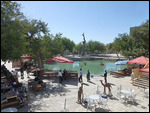
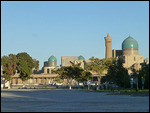
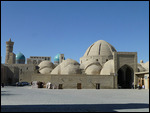
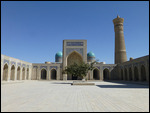


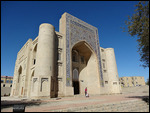







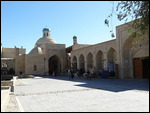


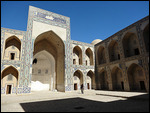
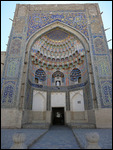

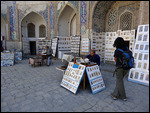



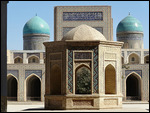


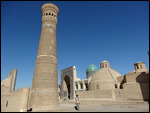

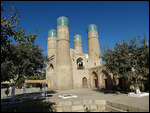
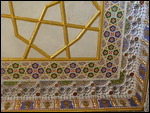
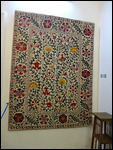
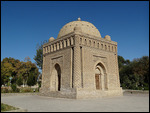
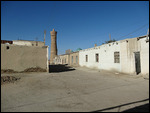
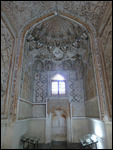
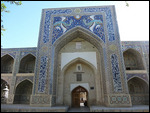
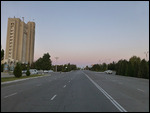
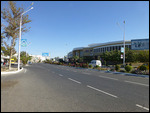

Ramesh
2012-10-20
Wonderful. A post to savour. The magic of Bukhara brought to the reader through your words and photos. After this, I have to follow in your footsteps.
Loved your posing the question of how much restoration is good. In some places, that might be a dilemma, but in a place like Bukhara or Samarqand, I would guess the spirit of Genghis or Timur will be there, no matter what. Actually, not those two brutal warlords. The people before them who made these two cities such great places.